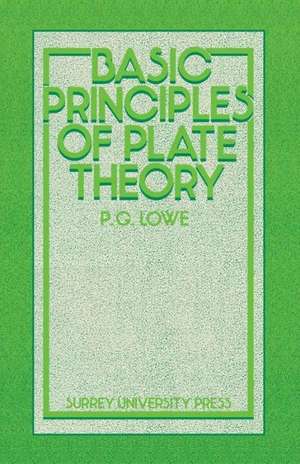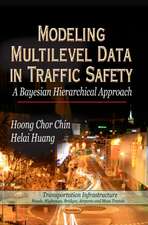Basic Principles of Plate Theory
Autor P. G. Loween Limba Engleză Paperback – 30 iun 1982
Preț: 380.07 lei
Nou
Puncte Express: 570
Preț estimativ în valută:
72.73€ • 76.12$ • 60.53£
72.73€ • 76.12$ • 60.53£
Carte tipărită la comandă
Livrare economică 31 martie-14 aprilie
Preluare comenzi: 021 569.72.76
Specificații
ISBN-13: 9780903384254
ISBN-10: 0903384256
Pagini: 180
Ilustrații: X, 180 p.
Dimensiuni: 140 x 216 x 10 mm
Greutate: 0.23 kg
Editura: SPRINGER NETHERLANDS
Colecția Springer
Locul publicării:Dordrecht, Netherlands
ISBN-10: 0903384256
Pagini: 180
Ilustrații: X, 180 p.
Dimensiuni: 140 x 216 x 10 mm
Greutate: 0.23 kg
Editura: SPRINGER NETHERLANDS
Colecția Springer
Locul publicării:Dordrecht, Netherlands
Public țintă
ResearchCuprins
1. Preliminaries.- 1.0 Motivation.- 1.1 Vectors—algebra.- 1.2 Vectors—calculus.- 1.3 Matrices.- 1.4 Statics—equilibrium.- 1.5 Summation convention and index notation.- 1.6 Elements of beam theory.- 1.7 Conclusions.- 2. Statics and Kinematics of Plate Bending.- 2.0 Introduction.- 2.1 The stress resultants.- 2.2 Principal values.- 2.3 The moment circle.- 2.4 Equilibrium equations—rectangular coordinates.- 2.5 Plate bending kinematics—rectangular coordinates.- 2.6 Equilibrium equations—polar coordinates—radial symmetry.- 2.7 Plate bending kinematics—polar coordinates—radial symmetry.- 2.8 Conclusions.- 3. Elastic Plates.- 3.0 Introduction.- 3.1 Elastic theory of plate bending—moment/curvature relations.- 3.2 Elastic theory of plate bending—governing equation.- 3.3 Circular plates—radial symmetry.- 3.4 Some simple solutions for circular plates.- 3.5 Simple solutions for problems in rectangular coordinates.- 3.6 Further separation of variable features—rectangular plates.- 3.7 Solution by finite differences.- 3.8 Some other aspects of plate theory.- 3.9 Stability of plates.- 3.10 Conclusions.- 4. Plastic Plates.- 4.0 Introduction.- A. Solid metal plates.- B. Reinforced concrete plates.- 5. Optimal Plates.- 5.0 Introduction.- 5.1 Problem formulation.- 5.2 Constant curvature surfaces and principal directions.- 5.3 Basic results—corners.- 5.4 Some complete results.- 5.5 Moment volumes.- 5.6 Some theory.- 5.7 Conclusions.- 5.8 Exercises.- 6. Bibliography and Exercises.- 6.0 Bibliography.- 6.1 Exercises.- Appendix Geometry of Surfaces.- A.0 The need for geometry.- A.1 Geometry of a plane curve—curvature.- A.2 Length measurement on a surface—first fundamental form.- A.3 The normal to a surface.- A.4 Normal curvature—second fundamental form.- A.5The derivatives of n—the Weingarten equations.- A.6 Directions on a surface.- A.7 The principal curvatures.- A.8 Principal directions.- A.9 Curvature and twist along the coordinate lines.- A.10 The curvature matrix.- A.11 The curvature circle.- A.12 Continuity requirements.- A.13 Special surfaces.- A.14 Summary—the geometrical quantities required for the construction of a plate theory.










![Introduction to Coastal Engineering and Management [With CD (Audio)]: Principle, Technology, and Materials](https://i0.books-express.ro/bt/9789812834850/introduction-to-coastal-engineering-and-management-with-cd-audio.jpg)
